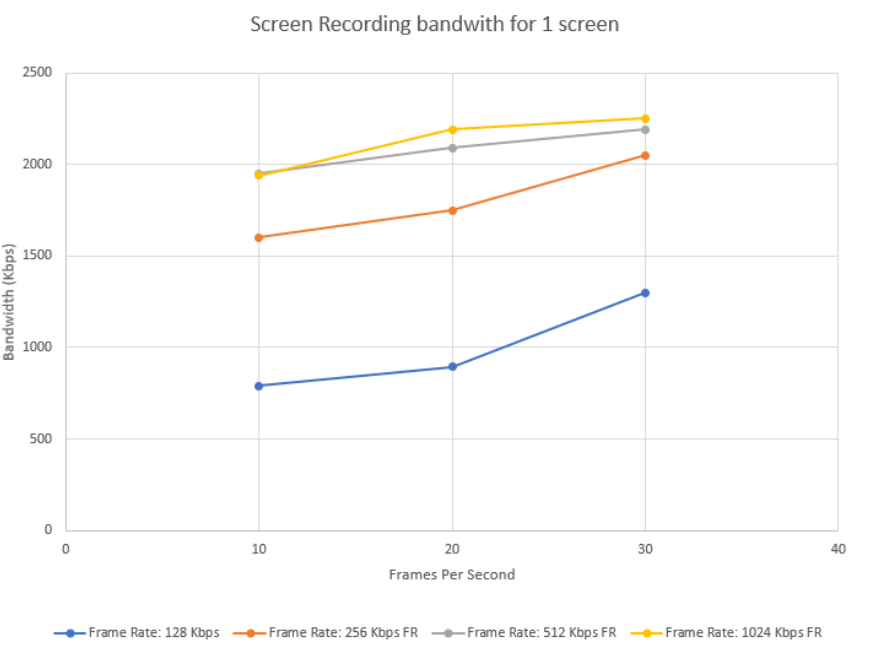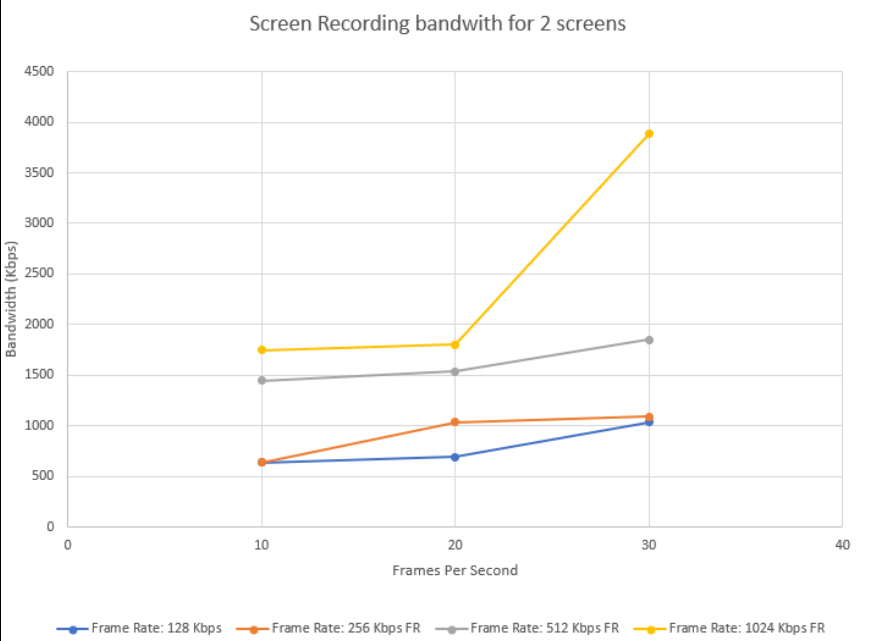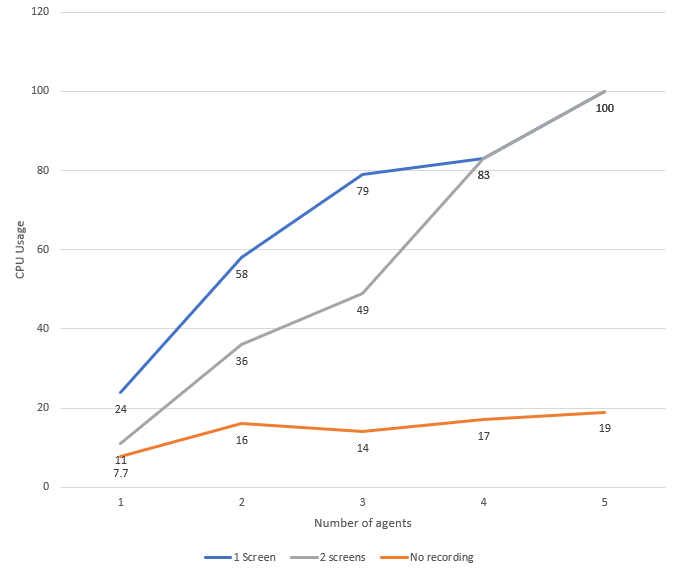To ensure the normal operation of the SmartReach applications on the Agent and User Portals, the computers used by your agents and users, and your data network must conform to the minimum requirements that are outlined in this document.
To understand the personas that use the SmartReach Portal, see the User Roles and Permissions section of the Product Documentation.
Terminology
| Term | Description |
|---|---|
| Agent | The end user of the SmartReach Agent Desktop. |
| Agent Desktop | The customizable agent view of the variable customer information, Automatic Call Distributor (ACD) tools, and disposition codes. Different service types, such as HCI and Preview, may have different Agent Desktops. |
| Bandwidth | The amount of data that can be transmitted in a fixed amount of time. |
| Clicker HCI Agent |
The agent who is signed in to the Human Call Initiator (HCI) service for manually selecting and launching calls from the HCI Agent Desktop.
|
| Codec | A device or a computer program for encoding or decoding a digital data stream or signal. |
| Datagram Transport Layer Security (DTLS) Protocol | A communications protocol for protecting data privacy and preventing eavesdropping and tampering. |
| Human Call Initiator (HCI) Service |
A service in which an agent (that is, a clicker agent) manually launches a call. If a customer answers the call, the call is routed to the closest agent, who speaks with the customer. |
| Real-time Transport Protocol (RTP) | A network protocol for delivering audio and video over IP networks. |
| Request for Comments (RFC) | A formal document from the Internet Engineering Task Force (IETF) that is the result of committee drafting and subsequent review by interested parties. |
| Transport Layer Security (TLS) Protocol | A common security protocol for facilitating privacy and data security for communications over the Internet. |
| User |
The end user of the SmartReach portal, who can be assigned different roles with distinct permissions. For more information, see the User Roles and Permissions section of the Product Documentation. |
| Voice over Internet Protocol (VoIP) | A methodology and group of technologies for delivering voice communications and multimedia sessions over Internet Protocol (IP) networks. |
| Web Real-Time Communication (Web RTC) |
A method for delivering voice and other forms of communication that are embedded directly into a web page. The technologies behind WebRTC are implemented as an open web standard and available as regular JavaScript APIs in all major browsers. For native clients, such as Android and iOS applications, a library is available that provides the same functionality. The WebRTC project is open-source and supported by Apple, Google, Microsoft, and Mozilla, among others. |
Minimum Agent Requirements
SmartReach supports the following agent connectivity methods:
- Agent Desktop Native (ADN)
- Agent Desktop (connecting to the Agent Desktop by using a web browser)
- Web Audio
- SmartReach Communicator (LVC)
- SIP Trunk
- PSTN
- Mobile Access to Agent Desktop
Agent Desktop Native (ADN)
Agent Desktop Native (ADN) is an installable SmartReach application that utilizes the open-source WebRTC framework and is specifically designed to consolidate the agent's experience in a single view. It offers the following benefits:
Ease of Use 
- Easy to install at any location with a public Internet connection.
- Software only—no additional licensing cost and specialized equipment required.
- No setup overhead—the application is pre-configured and fully customizable.
- Native encryption using industry standards for secure connections out of the box.
- Flexible connectivity with no browser dependency.
- Uses the advanced audio codec Opus for improved audio quality and control.
Feature Rich 
Offers access to new features and enhancements that may not be available with other connectivity options. That is, ADN supports Screen Recording and MS .Net integration features.
ADN allows you to use third-party resources that may increase the overall resource consumption. Remember to consider this when estimating bandwidth and system requirements.
| Hardware | Processor | 2 GHz or faster 32-bit (x86) or 64-bit (x64) |
| RAM | 1 GB | |
| Display | Minimum resolution of at least 1024 x 768 pixels | |
| Peripherals |
|
|
| Software | Operating System |
|
| Environment |
|
|
| Security | SIP/HTTPS | TLSv1.2 |
| RTP |
|
|
| Network | Codec | Opus |
| Codec Bandwidth |
|
|
| Web Traffic and Voice Bandwidth | 80 Kbps (55 Kbps for data + 25 Kbps for voice) based on average traffic |
Agent Desktop
You can access the SmartReach Agent Desktop through a web browser using a URL.
Check with your manager for the URL that is specific to your organization (for example, https://portal.na3.livevox.com/<Client Code>/AgentLogin).
| Specific Type | Agent Panel | HCI | Agent Queue | CRM |
|---|---|---|---|---|
| Agent Processor |
256 MHz 2 cores (when CRM is enabled for a better experience). |
256 MHz | 128 MHz | 4 cores 2.0 GHz or faster. |
| RAM |
512 MB 2 GB (when CRM is enabled for a better experience). |
512 MB | 512 MB | 2 GB or more |
| Display |
A screen with a resolution of at least 1024 x 768 (Agent Panel only). For a better experience, use 1366 x 768 (when Extended Panel or CRM is enabled). |
A screen with a resolution of at least 1024 x 768. |
A screen with a resolution of at least 1024 x 768. For a better experience use 1366 x 768. |
A screen with a resolution of at least 1024 x 768 (Agent Panel only). For a better experience, use 1366 x 768 (when Extended Panel or CRM is enabled). |
| Supported Browsers |
|
|
|
|
| Network Capabilities |
Minimum bandwidth of 100 kbps.
|
Minimum bandwidth of 100 kbps. | Minimum bandwidth of 100 kbps. | Bandwidth must be more than 500 kbps. |
| Operating System |
|
|
|
|
Web Audio
Web Audio is a non-proprietary agent connectivity method over supported web browsers using the open-source WebRTC framework.
Ease of Use 
- Works natively with supported web browsers; therefore no installation, extensions, or add-ons are required.
- Easy to access at any location with a public Internet connection.
- Software only—no additional licensing cost and specialized equipment required.
- No setup overhead—it is a web application.
- Native encryption using industry standards for secure connections out of the box.
- Uses the advanced audio codec Opus for improved audio quality and control.
Feature Rich 
- Is browser-dependent.
- Does not support Screen Recording and MS .Net integration features.
| Hardware | Processor | 1 GHz or faster 32-bit (x86) or 64-bit (x64) |
| RAM | 2 GB | |
| Display | Minimum resolution of at least 1024 x 768 pixels | |
| Peripherals |
|
|
| Software | Operating System |
|
| Environment |
|
|
| Browser |
|
|
| Security | SIP/HTTPS | TLSv1.2 |
| RTP |
|
|
| Network | Codec | Opus (a variable rate codec) |
| Codec Bandwidth |
|
|
| Web Traffic and Voice Bandwidth | 80 Kbps (55 Kbps for data + 25 Kbps for voice) based on average traffic. |
LiveVox Communicator (LVC)
LiveVox Communicator (LVC) is an installable SmartReach application (softphone) that provides voice access to the SmartReach platform. It is a legacy connectivity method that has been superseded by ADN.
Ease of Use 
- Easy to install at any location with a public Internet connection.
- Software only—no additional licensing cost and specialized equipment required.
- No setup overhead—the application is pre-configured.
- Encryption using industry standards for secure connections out of the box.
- Flexible connectivity with no browser dependency.
- Not integrated with the Agent Desktop; therefore, does not offer a consolidated agent experience in a single view. The agent is required to use two separate applications: LVC for voice and a web browser for Agent Desktop.
- Not compatible with Microsoft RDS or Citrix-published applications.
- Does not support Mac or Linux OS.
- Opus codec is not available.
Feature Rich
Does not support Screen Recording or MS .NET integration features.
| Hardware | Processor | 1 GHz or faster 32-bit (x86) or 64-bit (x64) |
| RAM | 2 GB | |
| Display | Minimum resolution of at least 1024 x 768 pixels | |
| Peripherals |
|
|
| Software | Operating System |
|
| Environment |
|
|
| Security | SIP | TLSv1.2 |
| RTP |
|
|
| Network | Codec | iLBC |
| Codec Bandwidth | Expected average usage is approximately equal to 40 Kbps. | |
| Web Traffic and Voice Bandwidth | 95 Kbps (55 Kbps for data + 40 Kbps for voice) based on average traffic. |
SIP Trunk
If required, SmartReach can support a SIP trunk connection. A SIP trunk is a direct connection between an in-house telephony system and the SmartReach platform.
Ease of Use
- Significant setup, configuration, and maintenance overhead.
- Requires experienced resources that are knowledgeable about your network and SIP infrastructure.
- Is dependent on the existing telephony system's capabilities for integration with SmartReach.
- Not integrated with the Agent Desktop; therefore, does not offer a consolidated agent experience in a single view.
Feature Rich
- Does not support Screen Recording or MS .NET integration features.
Due to a large number of vendors, versions, add-ons, and custom deployments for many of these systems, SmartReach is unable to provide configuration documentation.
| Hardware | Vendor | SmartReach can interact with any SIP-capable vendor that adheres to the RFC. |
| Security | SIP/HTTPS | TLSv1.2 |
| RTP |
|
|
| Network | Codec | G711 ulaw |
| Codec Bandwidth | 80 Kbps (average) | |
| Web Traffic and Voice Bandwidth | 135 Kbps (55 Kbps for data + 80 Kbps for voice) based on average traffic. |
PSTN
If required, SmartReach can support agent connectivity through the Public Switched Telephone Network (PSTN). SmartReach will provide a local number that the agents can use to establish the voice session through their local lines. This is typically used as a backup solution when an Internet issue occurs.
Ease of Use
- Voice traffic is not routed over the Internet; this requires the agents to have a connection through the PSTN.
- An additional charge is incurred for each minute of connection.
For information about pricing, contact your Account Manager.
- Not integrated with the Agent Desktop; therefore, does not offer a consolidated agent experience in a single view. The agent is required to use a web browser or ADN for Agent Desktop and a desk phone for voice.
Feature Rich
-
 If ADN is used, access to new features and enhancements that may not be available with other connectivity options is available. That is, ADN supports Screen Recording and MS .Net integration features.
If ADN is used, access to new features and enhancements that may not be available with other connectivity options is available. That is, ADN supports Screen Recording and MS .Net integration features. -
 If a web browser is used, Screen Recording and MS .Net integration features are not supported.
If a web browser is used, Screen Recording and MS .Net integration features are not supported.
| Software | Operating System |
|
|---|---|---|
| Environment |
|
|
| Security | HTTPS | TLSv 1.2 |
| Network | Web Traffic Bandwidth | 55 Kbps for data based on average traffic. |
Mobile Access to Agent Desktop
SmartReach Agent Desktop supports touchscreen functionality for mobile devices.
| Device | Safari | Chrome | Firefox |
|---|---|---|---|
| Android | Not supported | Yes | Yes |
| Android and Web Audio | Not supported | Yes | Yes |
| iPad | Yes | Yes | Yes |
| iPad and Web Audio | Yes | Not supported | Not supported |
| iPhone | Yes | Yes | Yes |
| iPhone and Web Audio | Yes | Not supported | Not supported |
Minimum User Requirements
| Specifications | LVP (Desktop) | Mobile | Tablet | |
|---|---|---|---|---|
| Hardware | Processor | 1 GHz or faster 32-bit (x86) or 64-bit (x64) | N/A | N/A |
| RAM | At least 2 GB | At least 1 GB | At least 1GB | |
| Display | Minimum resolution of at least 1280 x 1024 pixels | Minimum resolution of at least 1136 x 640 pixels (300+ PPI) | A 7-inch screen with a resolution of at least 1024 × 768 pixels (300+ PPI) | |
| Peripherals |
|
N/A | N/A | |
| Software | Operating System |
|
|
|
| Environment |
|
|||
| Browser |
|
|
|
|
| Network | Bandwidth | At least 500 Kbps | At least 250 Kbps | At least 500 Kbps |
IP and Port Ranges
| IP Address Ranges | SmartReach Designation | AWS Region |
|---|---|---|
United States | ||
| 18.210.216.0/24, 44.216.43.0/24 (LV-NA3) 18.210.217.0/24 |
NA3, LV-NA3 | East (Northern Virginia) us-east-1 |
| 34.217.139.0/24, 18.246.80.128/25 (LV-NA4) 34.217.140.0/24, 18.246.81.0/25 (LV-NA4) |
NA4, LV-NA4 | West (Oregon) us-west-2 |
| 18.190.36.0/24 3.138.44.0/24 |
NA6 | East (Ohio) us-east-2 |
Canada | ||
| 35.182.14.0/27, 15.156.251.0/25 (LV-NA5) 35.183.13.160/27, 3.96.84.64/26 |
NA5, LV-NA5 | Canada Central (Montreal) ca-central-1 |
Europe | ||
| 204.154.231.0/24 | EU1 | Europe (Ireland) eu-west-1 |
United Kingdom | ||
| 13.43.113.0/24 | UK1 | Europe (London) eu-west-2 |
| Port | TCP/UDP | Application | Why? |
|---|---|---|---|
| 22 | TCP | SFTP | Secure file transfer. Used to securely send and receive files from the SmartReach platform. |
| 443 | TCP | HTTPS | Secure HTTP. Used for web application and communication client registration. |
| 3478 | UDP | STUN | Session Traversal Utilities for NAT (STUN) service. Used for WebRTC communication with the SmartReach platform. |
| 5060 | UDP | SIP | Unsecured Session Initiation Protocol (SIP) port. Used for SIP communication with the SmartReach platform. |
| 5061 | TCP | SIP | Secured SIP port. Used for SIP communication with the SmartReach platform. |
| 5071 | TCP | SIP | Secured SIP port. Used for SIP communication with the SmartReach platform. |
| 5081 | TCP | SIP | Secured SIP port. Used for SIP communication with the SmartReach platform. Only for Canadian customers. |
| 5091 | TCP | SIP | Secured SIP port. Used for SIP communication with the SmartReach platform. Only for Canadian customers. |
| 8080 | TCP | WSS | Secure WebSockets. Used for WebRTC communication with the SmartReach platform. |
| 15000-30000 | UDP | RTP/SRTP | Media ports. When using SIP over TLS communication, this traffic is encrypted. |
| *Only required for the Interoperability Test. | |||
SmartReach Domain Names
| United States | Canada | External Domains | ||
|---|---|---|---|---|
| NA3.VA2 | NA4 | NA6 | NA5 | All Environments |
|
|
|
|
|
Screen Recording Requirements
You need ADN to use the Screen Recording feature. The quality of the recording depends on multiple factors such as bit rate, frame rate, and the number of screens.
Recommendations
For good-quality screen recordings, SmartReach recommends the following settings:
| Bit Rate (Kbps) | Frame Rate (FPS) | Number of Screens | Bandwidth |
|---|---|---|---|
| 1024 | 10 | 1 | 1940 Kbps |
| 1024 | 30 | 2 | 3880 Kbps |
Bit rate, frame rate, and the number of screens have a direct impact on the bandwidth usage of ADN.
Examples
A chart representing the bandwidth usage of Screen Recording with different configurations for one screen is as follows.

A chart representing the bandwidth usage of Screen Recording with different configurations for two screens is as follows.

Impact of ADN 7.3.0 on Virtual Environments
ADN and its functionalities are available in virtual environments such as Microsoft RDP and Citrix. However, it is important to verify the impact of CPU usage on the hosts, especially if you are using Screen Recording, which is a resource-intensive process. Some of the results from our test lab for different configurations are as follows.
Microsoft Remote Desktop Protocol
Test information
- Host: Windows Server 2016
- RAM: 16 GB
- CPU: 2 x Intel Xeon E3-1230 v6, 3.5 GHz, 1 core per socket
- Frame Rate: 30 FPS
- Bit Rate: 1024 Kbps
A chart representing the impact of CPU Usage for Screen Recording in Virtual Environments.

Frequently Asked QuestionsLink to Frequently Asked Questions
Question: Which encryption protocol do you use for communication channels?
Answer: TLS1.2
Question: What are your headset requirements?
Answer: SmartReach can work with any headset. However, we recommend that you use a model that includes the following features at a minimum:
- USB 2.0+ connection
- No wireless connectivity
- Stereo audio
- Full coverage of both ears (over-the-ear headphones)
- Noise cancelation
- 32000 Hz+ sampling rate
- 16-bit digital audio bit depth
- Automatic gain control
- Hardware muting
Question: What are the requirements for our server infrastructure to run your product at sites in multiple geographical locations (both domestic and international)?
Answer: Some ports, IPs, and domains will need to be whitelisted on your network. To help accommodate that, our requirement is that we go through the VoIP Implementation process to perform proper testing with your network. This is to ensure that your network is capable of reaching the SmartReach servers with minimum latency and to ensure that the audio quality is high.